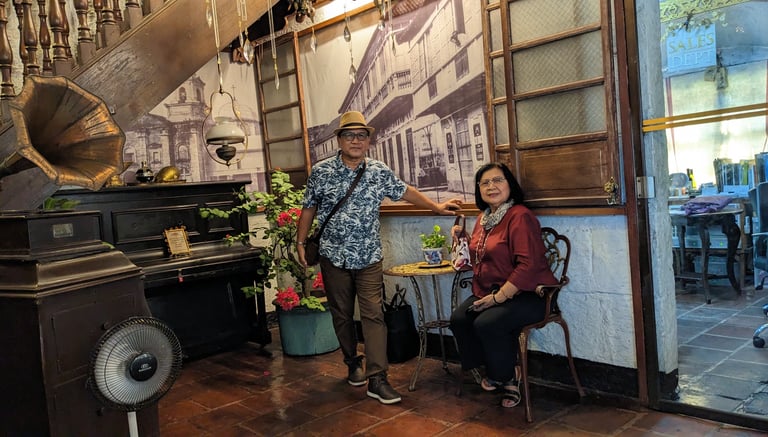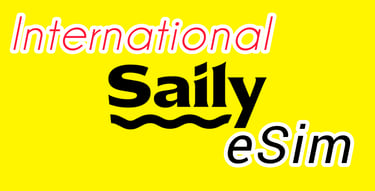Frugal Sightseeing Tips in Metro Manila
Explore Metro Manila on a budget with our frugal sightseeing tips. Discover must-see places that showcase the rich history of 16th century Spaniard colonialism while finding affordable accommodations for your next adventure.
RogerH
In this blog post, we share our experiences as frugal sightseers. Learn how we prioritize sustainability and travel within our means. Discover our tips for finding affordable accommodations and making the most of your travel budget.
Traveling on a budget can be an exciting and rewarding experience. By following a few simple tips, you can make the most of your trip without breaking the bank. Firstly, it's important to plan ahead and research affordable accommodation options such as budget hotels or hostels. Consider traveling during off-peak seasons to take advantage of lower prices and fewer crowds. Instead of dining out for every meal, try local street food or pack a picnic to save money on food expenses. Additionally, make use of public transportation or walk whenever possible to avoid costly taxi fares. Lastly, keep an eye out for free or discounted attractions, museums, and events in the area you're visiting. With a little bit of planning and resourcefulness, you can enjoy a memorable and frugal travel experience. There are times, however, where there are not many options. There are times when you did you best and still have to do the traditional - like renting a car. The good thing is that there are still a lot of good offers that can be found.
To get a discount on car rentals, there are several strategies you can try. Firstly, it is advisable to book your rental car in advance. This allows you to compare prices from different car rental companies and take advantage of any ongoing promotions or discounts. Additionally, consider joining loyalty programs offered by car rental companies. These programs often provide exclusive discounts and benefits to members. Another tip is to be flexible with your travel dates and times. Rental prices may vary depending on the day of the week or the time of the year, so adjusting your plans can help you secure a better deal. Lastly, don't forget to check for any coupon codes or promotional offers that may be available online or through travel websites. By implementing these strategies, you can increase your chances of getting a discount on car rental
Travel insurance is of utmost importance when planning a trip. It provides a safety net and peace of mind, ensuring that unexpected events or emergencies are covered financially. Whether it's a medical emergency, trip cancellation, lost luggage, or even a missed connection, travel insurance can save you from exorbitant expenses. Medical treatments abroad can be incredibly expensive, and having insurance can protect you from the burden of hefty medical bills. Additionally, travel insurance offers assistance in case of travel interruptions, such as flight delays or cancellations. It can cover the costs of alternative accommodations and transportation, making your journey less stressful. Therefore, investing in travel insurance is a wise decision to safeguard yourself and your finances during your travels.
Traveling to less expensive destinations can be an exciting experience filled with unique adventures and cultural immersion. These destinations often offer a chance to explore stunning landscapes, vibrant markets, and historical landmarks without breaking the bank. From the bustling streets of Southeast Asia to the charming towns of Eastern Europe, travelers can expect to encounter friendly locals, authentic cuisines, and affordable accommodations. While luxury amenities may be limited, the affordability allows for a more genuine and immersive travel experience. However, it is important to be prepared for potential language barriers, different customs, and lower infrastructure standards in these destinations. With an open mind and a flexible itinerary, traveling to less expensive destinations can be an enriching and budget-friendly way to explore the world.
When planning a trip to less developed destinations, it is important to take certain precautions. These places may have limited infrastructure, less reliable transportation systems, and fewer medical facilities. It is advisable to do thorough research and gather information about the destination before embarking on the journey. This includes understanding the local customs, laws, and potential risks. It is also essential to pack appropriately, considering the climate and cultural norms. Travelers should be prepared for unexpected situations and carry necessary supplies such as first aid kits and necessary medications. Additionally, it is recommended to stay informed about the current political and social situations of the place to avoid any potential risks. By being cautious and well-prepared, travelers can have a safe and enjoyable experience in less developed destinations.
When it comes to saving money on flights and accommodations, it is advisable for travelers to book in advance. The ideal timeframe for booking flights is generally around 4-6 weeks before the desired departure date. By booking within this window, travelers can often find cheaper fares due to airlines offering early bird discounts or promotional deals. As for accommodations, booking in advance can also lead to significant savings. It is recommended to make reservations at least 1-3 months ahead of time, especially during peak travel seasons. By doing so, travelers have a better chance of securing lower rates and availability at their preferred hotels or vacation rentals. However, it is important to note that prices may still fluctuate, so it is wise to keep an eye out for any last-minute deals or fare drops. And don't forget to book your hotels ahead of time as this could be a big money saving factor.
Save Money by Using Free Hotel Shuttle Buses
One of the easiest ways to cut transportation costs while traveling is by taking advantage of free hotel shuttle buses. Many hotels—especially mid-range to upscale properties and airport-adjacent accommodations—offer complimentary shuttle services that can help you save on taxis, rideshares, or public transport.
Where to Find Them:
Airport Hotels: Chains like Marriott, Hilton, Hyatt, Holiday Inn, Radisson, and Best Western often provide free shuttles to and from major airports.
Resorts: Some resorts offer free transport to nearby attractions, beaches, or city centers.
Casino Hotels: In places like Las Vegas or Macau, casino hotels frequently run free shuttles between partner properties or central transport hubs.
City Hotels: In some tourist-heavy cities, certain hotels offer shuttles to downtown, malls, or popular attractions.
How to Use Them:
Check Before Booking: Not all hotels advertise this clearly. Look at the hotel website under “Amenities” or “Transportation.” You can also call or email to confirm.
Know the Schedule: Shuttles may run on a fixed schedule (e.g., every 30 minutes) or require a reservation. Some only run during specific hours, like 6:00 AM to 10:00 PM.
Reserve Early: Some hotels require you to book your shuttle seat in advance, especially during peak times or if you're arriving late at night.
Be On Time: These shuttles don't usually wait for late guests. Arrive 10-15 minutes early.
Limitations to Keep in Mind:
Limited Routes: Most free shuttles only go to/from the airport or a few select destinations.
Restricted Hours: If you’re flying very early or very late, the shuttle might not be available.
First Come, First Served: Space may be limited, especially at smaller properties.
No Luggage Help: You may have to handle your own bags, especially if the shuttle is a van or small bus.
Bonus Tip:
Even if you're not staying at a hotel, some shuttle routes serve nearby hotels or public terminals. As long as you're discreet and the hotel doesn't check room numbers, you may be able to ride along—though this is unofficial and not always recommended.
Stay Connected Abroad: Why Every Traveler Should Use an eSIM
Gone are the days of scrambling to find a local SIM card at the airport or dealing with outrageous roaming charges from your home network. If you're a traveler—especially one going abroad—there’s a modern solution that’s becoming a must-have: the eSIM.
What Is an eSIM?
An eSIM (short for "embedded SIM") is a digital version of the SIM card that’s already built into your phone. Instead of popping out your physical SIM card and replacing it with a local one, you can simply download a mobile plan right onto your device.
Think of it as a virtual SIM card—no plastic, no swapping, no fuss.
Why eSIMs Are a Game-Changer for Travelers
✅ Instant Internet When You Land
No more hunting down SIM vendors in a foreign airport or struggling to connect to public Wi-Fi. With an eSIM, you can activate your data plan before you even leave home and be online the moment you land.
✅ Keep Your Regular Number
Most modern phones support dual SIM functionality, which means you can keep your main SIM active for calls or texts from back home while using the eSIM for data. This is perfect for staying reachable without paying insane roaming fees.
✅ Cheaper Than Roaming
Travel eSIM providers like Airalo, Holafly, Nomad, or GigSky offer competitive pricing—often just a few dollars for several gigabytes of data, depending on the country or region. This can save you a lot compared to your home carrier's international plans.
✅ Regional Plans for Multi-Country Trips
Planning to hop around Europe or tour Southeast Asia? Many eSIM providers offer regional packages, so you don’t need to buy a new SIM every time you cross a border.
✅ No SIM Swapping = No Stress
You don’t have to carry a SIM ejector tool or risk losing your original SIM card. Everything is digital and can be managed from an app.
What You Need to Know Before Using an eSIM
Check if your phone supports eSIMs. Most newer iPhones (XS and later), Samsung Galaxy models, and Google Pixels do.
Make sure your phone is unlocked. If it’s carrier-locked, you may not be able to use an eSIM from another provider.
Install and activate while connected to Wi-Fi—ideally before your trip.
Compare providers for the best coverage and data limits for your destination.
Final Thougths
If you travel internationally—even just once or twice a year—an eSIM is one of the smartest tools you can use. It’s fast, flexible, and it helps you stay connected without breaking the bank.
So before your next flight, skip the SIM card roulette and download an eSIM. It could be the simplest travel upgrade you make this year.
So, that is my take on the subject. How about you? Anything you want to share? Drop me a comment here. Visit our YouTube Channel here.


Subscribe FREE
Quality not Quantity
Write your comments or your own story....
Address
BF Home Parañaque, MM, Philippines
Contacts:
+63 969-308-4573
rogerhilario@gmail.com








